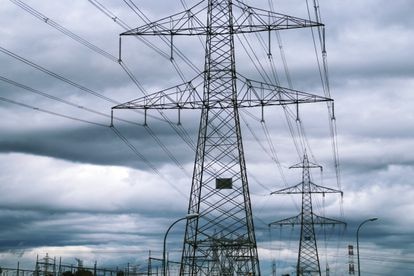An energy infrastructure project bigger than the Hoover Dam is how Hunter Armistead describes the $10 billion venture his company will be overseeing during the next three years.
As the chief executive of one of the world’s largest wind and solar development companies, Armistead said breaking ground on Pattern Energy’s SunZia transmission line marks a major milestone as the United States looks to make good on promises to address climate change and bolster the nation’s already overwhelmed power grids as demand increases and weather events become more extreme.
It is also a cautionary tale, he told The Associated Press in an interview ahead of Friday’s ceremony on the open plains of north-central New Mexico.
The U.S. can’t afford to take 12 years to “create this type of solution” given the growing need for more energy infrastructure, Armistead said.
He pointed to Europe and China, where billions of dollars are being invested in new high-voltage lines to connect power plants to cities where demand is high.
“They all recognize the need to build out bulk transmission, to create inter-regional transfer points in order to create greater reliability,” he said. “It also creates diversity in resources and diversity in dealing with weather, which is now the new most important factor driving both our load and our generation.”
The Biden administration has set a goal to eliminate carbon emissions from the power sector by 2035. The effort faces numerous challenges, including the lack of transmission.
The U.S. Department of Energy has cited independent estimates that indicate transmission systems need to expand by 60% by 2030 and may need to triple by 2050. The agency is working with two national laboratories on a transmission planning study, with findings and recommendations expected later this year.
The Biden administration is just the latest to promise speeding up the development and modernization of the nation’s energy infrastructure through expedited federal permitting and regulatory reforms. Former Presidents Barack Obama and Donald Trump also vowed to roll back bureaucracy.
The SunZia transmission project has been more than a decade in the making. After an initial review over several years, the U.S. Bureau of Land Management authorized a right-of-way grant on federal lands. That was revisited when developers in 2021 submitted a new application modifying the route after the U.S. Defense Department and environmentalists raised concerns about the path of the high-voltage lines.
Final approval came in May, with U.S. Interior Secretary Deb Haaland saying the latest application was reviewed in record time as the administration has tried to fast-track more projects.
In Arizona, there are still concerns about potential ecological damage from SunZia where it will cross the San Pedro River Valley. Critics plan to appeal a recent court decision affirming regulatory approval in that state.
“I disagree with those who believe that poorly planned projects like SunZia should now be used as the pretext for granting the federal government even greater authority to sidestep legitimate state and local concerns over federal powerline siting decisions,” said Peter Else, chair of the Lower San Pedro Watershed Alliance.
Haaland said the Bureau of Land Management consistently sought collaboration to develop the best possible route for the line. She doubled down Friday on the administration’s promise to permit at least 25 gigawatts of onshore renewable energy by 2025. She said New Mexico, her home state, stands to play a big role in production given its supply of sunshine and wind.
The SunZia project will stretch about 550 miles (885 kilometers) — funneling renewable energy to more populated areas in Arizona and California. Developers say it will be capable of transporting more than 3,500 megawatts of new wind power to 3 million people in the West.
Other projects in the works include the Southern Spirit transmission line that would link Texas with other grids in the southeastern U.S., the proposed Greenlink West Transmission Project in Nevada, and a set of high-voltage lines that would span from central Utah to east-central Nevada.
Aside from addressing climate issues, U.S. Sen. Martin Heinrich said such projects represent one of this generation’s greatest economic opportunities. He and other officials have pointed to construction jobs and tax revenues for local governments and states.
The New Mexico Democrat earlier this year introduced legislation to improve the planning, permitting and financing of transmission infrastructure. The proposals include a 30% investment tax credit for large-scale projects as well as coordinated agency reviews and early stakeholder engagement.
Armistead said developers historically have tried to avoid federal lands because of the bureaucracy involved. The irony is that the federal government actually wants developers to build more transmission lines, he said.
SunZia will cross varied terrain, from a riparian area along the Rio Grande to rugged canyons and cactus-dotted valleys.
While rerouting the line around sensitive areas in New Mexico took more time and money, Armistead said he believed it was the right thing to do.
“I believe that is a model for how it should be done in the future. And that’s what I’m so proud of,” he said. “I think this creates the credibility and the reality of what is possible, and we better keep building on from there.”






